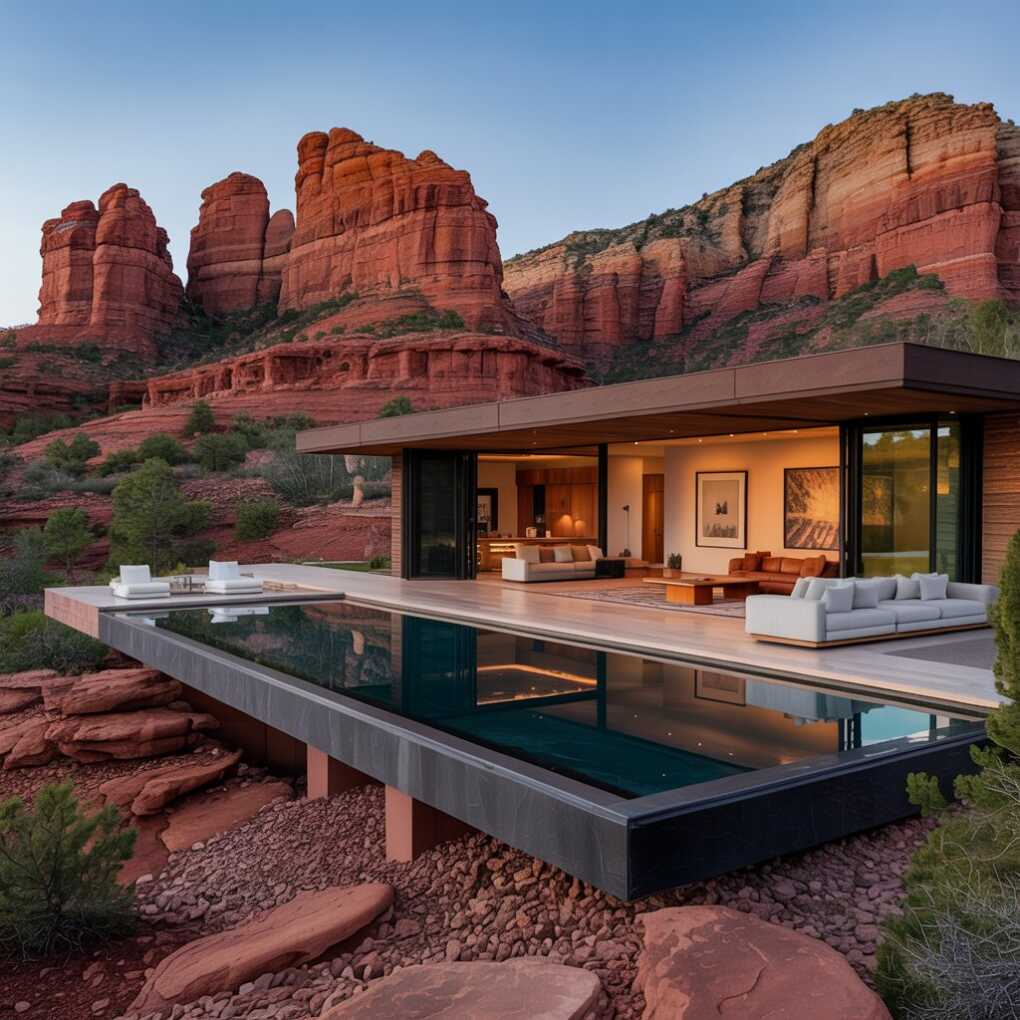Designing and building a luxury home in Arizona brings a unique opportunity to embrace both architectural elegance and the stunning backdrop of the desert Southwest. From the scenic views of the Sonoran landscape to the distinct climate and regional regulations, Arizona offers a compelling setting for high-end living. However, creating a home that blends comfort, style, and functionality requires thoughtful consideration of the region’s unique characteristics. We will explore key elements homeowners should understand before starting the process—from choosing the right location to navigating local zoning, climate demands, and custom design opportunities that reflect Arizona’s distinct charm.

Key Considerations When Planning Your Luxury Home in Arizona
1. Understanding the Arizona Climate and Its Impact on Design
Arizona’s climate varies by region, but most luxury homes are built in areas like Scottsdale or Paradise Valley, where desert temperatures are hot and dry for much of the year. When building a luxury home in Arizona, this environment requires architectural planning that prioritizes energy efficiency, natural ventilation, and solar considerations. Orientation plays a major role—homes carefully aligned to the sun’s path can minimize indoor heat during summer while maximizing natural light in the cooler months.
Thermal insulation, reflective roofing materials, and advanced HVAC systems are essential to manage energy costs without sacrificing comfort. Landscaping must be drought-tolerant, favoring native plants that require little irrigation while adding beauty to the outdoor spaces. These choices must work together to create a home that feels cool and comfortable year-round, even as the temperatures outside soar.
2. Choosing the Right Location for Privacy and Lifestyle
The location of a palmilla luxury homes goes far beyond simple convenience—it’s an extension of the lifestyle the homeowner envisions. In Arizona, homeowners often look for expansive lots with mountain views, golf course access, or proximity to upscale shopping and dining. But there’s more to the location than just the view. Privacy, security, and accessibility all play a critical role. For example, building on a hillside lot may offer breathtaking vistas but could also involve higher construction costs due to grading or retaining walls.
Meanwhile, homes in established luxury communities like Silverleaf or Estancia may have homeowner association rules that influence exterior design, landscaping, or lighting. Accessibility to major roadways, airports, and amenities like hiking trails or cultural venues should also be factored in to ensure the property suits daily needs while maintaining exclusivity and serenity. Balancing these elements is key to creating a functional and peaceful retreat.
3. Navigating Permits, Zoning, and Community Guidelines
Building a luxury home in Arizona means navigating a landscape of regulatory requirements that differ by city and county. Zoning laws determine the type of structure you can build on a particular lot, and understanding them upfront can save time and money. For example, zoning rules may limit the height of structures, restrict how close you can build to property lines, or even dictate allowable uses for accessory buildings. In communities with design review boards or architectural committees, you may need approvals on aspects such as color palettes, roofing materials, or outdoor lighting.
Timing is also important. Permitting in Arizona can be lengthy, especially for custom homes with elaborate features or unique footprints. Working with a builder who understands local codes can help ensure your plans align with all legal requirements while minimizing delays. Being informed and proactive is essential to keep the construction process moving smoothly from blueprint to reality.
4. Blending Architectural Style with Arizona’s Natural Setting
One of Arizona’s greatest opportunities in building a luxury home is integrating indoor and outdoor spaces into a cohesive living experience. Architectural styles in the region often reflect a harmony with the surrounding desert, drawing on elements such as stone, stucco, glass, and metal to create modern and timeless homes. Whether you’re drawn to contemporary design, Spanish colonial, or something more transitional, the key is to consider how each element contributes to the home’s interaction with its environment.
Expansive windows can frame mountain views, while shaded patios and interior courtyards provide year-round outdoor living without the harsh sun exposure. Infinity-edge pools, fire features, and outdoor kitchens are common, but they should be designed with careful attention to layout, wind direction, and privacy. Every design choice, from floor plans to materials, should be made with an understanding of how it performs and feels in the desert climate. To understand the design more, check out how luxury condos miami shaped their decoration of pools and more.
Conclusion
Building a luxury home in Arizona requires more than a vision—it demands a comprehensive understanding of the environment, community standards, architectural balance, and long-term investment considerations. From embracing the challenges of desert heat to designing with views and lifestyle in mind, each decision shapes a home that feels both elegant and enduring. When every element is aligned with the natural setting and the owner’s goals, the result is a residence that captures the essence of luxury living in the Arizona desert.
